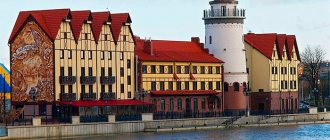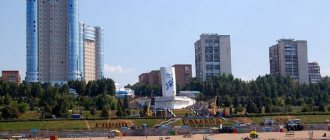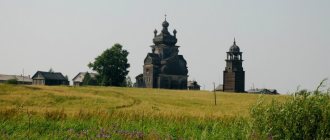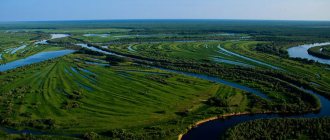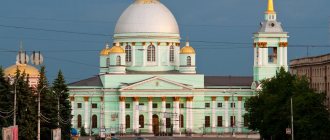Not every city in southern Russia can boast such exciting stories told by local residents. For example, many people know the abandoned dacha “Elsa”, located in the resort area, not far from the Aeolian Harp. There is a mysterious legend about it (details later in the article), thanks to which this place attracts many tourists - lovers of mysticism and adventurers.
The article presents some interesting historical facts, as well as the most famous stories, myths and legends of Pyatigorsk.
Interesting historical facts
Everyone has heard about this magnificent sunny city. It was thanks to the poet Mikhail Yuryevich Lermontov that many learned from school about these majestic mountains, beautiful and proud people, about the wonderful healing climate and magical mineral water that works real miracles. This region in the Caucasus has been inhabited for a long time. There are mentions of it by Arab travelers in 1334.
The study of the benefits of mineral springs in Russia began under Peter I. Scientists first described the springs of Pyatigorye in 1773, and in 1793 chemical analyzes of the mineral waters of all springs were made. The fact that among the Caucasus Mountains, magical springs gushing directly from the ground that could cure many diseases, was soon learned in the most remote places of the Russian Empire. And people suffering from various diseases from all over the country headed to these hot sulfurous waters. But these places are famous not only for their springs, but also for their amazing legends and stories about the mountains of Pyatigorsk.
"Society of water drinkers of both sexes"
Goryachevodsk Postcard beginning 20th century. Image from fotostarina.ru
In 1812, when all of Europe was burning under Napoleonic fire, here in the North Caucasus its own history was being built - the first house appeared in the Goryachevodsk Valley. It was built by the solicitor Chernyavsky and thus, as historians believe, “laid the first foundation” for the resort. Of course, in 1809 the use of mineral waters for medicinal purposes was officially introduced here.
Chernyavsky’s experience turns out to be successful, after which construction at the resort is in full swing. The three houses are being built “at the invitation and persuasion of the main authorities” by the pharmacist Sobolev. The village of Goryachevodskaya, on the initiative of General Ermolov, is settled by 250 families of Volga Cossacks. 300 captured Polish soldiers and officers sent to Goryachevodsk are engaged in the improvement of the city, in particular, building a stone staircase leading to the baths located on Goryachaya Mountain.
And in 1820, a very curious tourist, Alexander Sergeevich Pushkin, appeared here, accompanied by the family of General Raevsky. He writes in a message to his brother: “60 Cossacks were riding around us, a loaded cannon with a lit fuse was trailing behind us... I lived in the Caucasus for two months; I really needed water and it helped me tremendously, especially hot sulfur water. However, I bathed in warm sour-sulphur, in iron and sour cold... I regret, my friend, that you and I did not see the magnificent chain of these mountains, their icy peaks, which from a distance at a clear dawn seem like strange clouds, multi-colored and motionless.; I regret that I did not ascend with me to the sharp top of the five-hill Beshtu, Mashuk, Iron Mountain, Stone and Snake Mountains.”
Vepkhvadze I.A., “Pushkin in the Caucasus” (1952). Image from artlib.ru
Pushkin’s biographer, Mr. Bartenev, wrote: “These original trips, this life is free, tempting and completely different from the previous one, this news and unexpected impressions, life in wagons and tents, various walks, nights under the open southern sky, and all around bizarre pictures mountains, new customs, unprecedented tribes, auls, sakli and camels, the wild freedom of the mountain Circassians, and several hours away a stubborn, cruel warrior with the great name of Ermolov - all this must have pleased young Pushkin extremely much.
Well, obviously, he was right - for a restless and energetic poet, such a lifestyle was certainly suitable. And he didn’t lose his beloved social life here. Journalist I. Radozhitsky, who visited the resort in 1823, wrote: “Having entered the town, I saw in all the courtyards many carriages of visitors and pretty people walking along the streets. The most military officers met; There were also dandies in fashionable frock coats and tailcoats... I found here a large, beautiful and rather elegant company of water drinkers of both sexes, jostling around the source of health... Ladies under umbrellas or in hats, under coats and in hoods, men in frock coats and with canes. There are no officials observed here.”
In 1826, the first hotel, also known as the first public building, opened in the city. It was called “Restauration”, which, of course, emphasized the peculiarity of the priorities of the local “water society”.
And in 1829 Pushkin came here again. True, he was passing through, but he noted changes for the better: “Today, magnificent baths and houses have been built... A boulevard lined with sticky trees runs along the slope of Mashuk. Everywhere there are clean paths, green benches, proper flower beds, bridges, pavilions. The keys are trimmed and lined with stone; police orders are nailed to the bathroom walls; Everywhere there is order, cleanliness, beauty.”
The idea of creating a park in the city
A. S. Pushkin proposed to establish a park in Pyatigorsk. This idea came to him at the moment when from the top of Beshtau he admired the surroundings of the Kavminvod. This is most likely not a legend of Pyatigorsk. This fact is absolutely confidently stated by the employees of the city park of culture and recreation.
During a trip to Arzrum (Georgia), the poet decided to stop in Pyatigorsk. Here he walked through the mountains, from where he examined the panorama of the area. He noticed the empty area and told his fellow travelers, among whom were officials, that a park should definitely be created in this place. This proposal was brought to the attention of the mayor. As a result, the poet’s brilliant idea came true - a park of culture and recreation was established in the city.
It was here, admiring the beautiful sunset and going down the mountain, A.S. Pushkin came up with the first lines of the poem “On the Hills of Georgia.”
Entertainment
All conditions have been created for relaxation and entertainment of local residents and guests arriving in Pyatigorsk. No one will be bored at the resort!
You can visit the modern cinemas “Rodina”, “Drugar”, “Cinema Gallery”.
Have fun at the amusement park named after. Kirov, there is also a nice lake with its own boat station, where you can ride on a catamaran or on a boat.
There are also many cafes in this park that serve delicious kebabs and other masterpieces of Caucasian cuisine, and play live music in the evenings.
The park also has a planetarium.
In the summer, in the Green Theater, located in the park. Kirov very often hosts concerts of domestic and foreign pop stars.
Also in Pyatigorsk you can arrange excellent shopping at brand stores in numerous shopping centers in the city or by visiting the Lira wholesale market.
The city of Pyatigorsk is famous for its light industry and is not only the capital of the North Caucasian Federal District, but is also considered the “Fur Capital” - in our city there are many fur factories and specialized stores where you can buy very high-quality fur products from valuable furs for very little money
.
Quite recently, on the outskirts of the city, a hyper water park called “City of the Sun” was built, where you can splash around in the water, sunbathe, and have a tasty snack. In general, you can spend the whole day in this town and you won’t be bored!
For theater lovers, there is an operetta theater in Pyatigorsk. In the evening there are very interesting performances with the participation of a local troupe, or you can go to tour performances of the best theaters in Russia.
Excursion services are highly developed in Pyatigorsk. You can go on an excursion to almost any point in the Caucasus.
We still have a lot of interesting sights, in addition to those described above, but I will write about them in the following articles.
In general, life is in full swing in the city of Pyatigorsk. There's always something to do. Come to Pyatigorsk, it’s good here and guests are always welcome here!
Share link:
The story of the tram route
This story can also be attributed to the relatively modern legends of Pyatigorsk. Even before the war, the city had a tram route that ran through the entire resort area (past the Elsa dacha) all the way to Proval. The current modern square at the entrance to the tunnel that leads to the lake was at that time intended for turning around tram cars. During the occupation, tram lines, depots and carriages were seriously damaged, but were restored again. However, the route to Proval was never repaired.
The official reason is the need to use rails for the mines of Mount Beshtau. There is also an unofficial version according to which the tram heading to Proval fell from the slope of Mount Goryachaya into the abyss. Since then, trams have not run in that direction.
About the golden horse
The following rumors can be attributed to the legends of the city of Pyatigorsk. They say that a golden horse was once buried on the site of the monastery located on Mount Beshtau. Scientists and archaeologists claim this.
On the mountain stands the Second Athos Monastery - a building from the early 20th century. It was recently restored. But few know that an older monastery existed on this site in the 10th century. At a time when hordes of Mongol-Tatars were marching towards Pyatigorye, the monks hid the untold treasures of the monastery, cast into a golden horse. Not finding these riches in the monastery, the invaders completely destroyed it. And since that time, the golden horse has been somewhere in the vicinity of Beshtau. Modern estimates of the value of the treasure are several billion dollars.
Perkalsky arboretum and other resort infrastructure
One of the symbols of the city. Eagle on Hot Mountain and view of Beshtau. Postcard beginning 20th century. Image from fotostarina.ru
Next - development, albeit unhurried, but progressive. In 1851, clumsy but economical omnibuses began to travel from the entrance to the Restoration to the nearest cities. And next year another patient arrives here, who will become famous literally in a matter of months - Lev Nikolaevich Tolstoy.
However, the foundations of his life position had already been formed. Only after arriving and settling down in the “Restauration”, he wrote in his diary: “In Pyatigorsk, music, people walking and all these, sometimes, meaninglessly attractive objects did not make any impression. One thing - the cadets, clothes and making clothes for half an hour absurdly bothered me. We must not forget that the main purpose of my coming here is treatment, which is why tomorrow I am sending for a doctor and renting an apartment, alone, in a settlement.”
From here, Tolstoy sends his first work, “Childhood,” to the Sovremennik magazine and Nekrasov: “Look through the manuscript and, if it is not fit for publication, return it to me.” In this case, Tolstoy decides to burn everything he started and never engage in literary exercises again.
Nekrasov, however, liked everything: “I read your manuscript... It is so interesting that I will publish it.”
This is how the literary career of the most venerable writer in Russia began in Pyatigorsk.
L.N. Tolstoy. Photo gray 19th century. Photo from the site rodb-v.ru
In 1863, the first scientific resort and medical institution appeared here - the balneological society. From this moment on, the stay of holidaymakers “on the waters” is traditionally supervised by certified aesculapians. At the same time, a telegraph arrived in Pyatigorsk.
1879 - a botanical garden, also known as the Perkal Arboretum, was established on the northern part of Mount Mashuk.
1894 - the railway comes to the city. The resort is becoming more and more accessible.
1903 - the first tram line was launched. It connects the station (which is completely logical) with the Flower Garden, and then goes through the Sabaneevskie Baths to the Proval. Pyatigorsk is developing as a full-fledged modern city.
And in 1907, the city, on the contrary, suffered an irreparable loss. The old man Chukhninov, 102 years old, who was once a cab driver and took Lermontov to his last duel, died. Another connecting thread was broken.
1911 - The newspaper “Novoe Vremya” reports: “Tomorrow the Khan of Khiva leaves for Pyatigorsk, accompanied by his retinue.” The resort is increasingly gaining popularity.
Such advertisements in newspapers are becoming commonplace: “Pyatigorsk. Today the summer treatment season in the Kislovodsk group is open. The weather is beautiful. A huge gathering of patients is expected. By the opening of the season, the arrival reached 900 people. As of May 31, visitors bought tickets for treatment: in Pyatigorsk - 2,319, in Essentuki - 3,800, Zheleznovodsk - 820.”
Postcard pp. 20th century. Image: gold-manaa.livejournal.com
And the passions unfolding in this world of miraculous healing are serious. In particular, “Voice of Moscow” reports: “Today a certain Zatsepin burst into the editorial office of the newspaper “Pyatigorskoe Echo”, who, after refusing to publish an abusive letter addressed to the artist Gzovskaya in the newspaper, tried to hit the editor with a stick. When he failed, he pulled out a revolver and was preparing to fire a shot, but was disarmed by the unconfused editor.”
What can you learn from idleness, heat and excessive bliss.
Unfortunately, real tragedies also happened. “New Time” wrote: “Pyatigorsk. Yesterday, during an evening service in the Second Athos Dormition Monastery located under Mount Beshtau, someone shouted: the ceiling is falling! A terrible panic arose. Several people rushing to the exit of the worshipers were crushed to death and many were wounded.”
That day, seven women died in the monastery, and twenty people were wounded.
And, of course, Pyatigorsk, like all popular resorts, was crammed with all kinds of scammers. “Russian Word” reported: “Pyatigorsk. The fighters were arrested. Bykov, who styled himself the champion of Siberia, and Kraevsky. They turned out to be workers of the Lidievsky mines, in Ekaterinoslav province, Zagoruiko and Grebenyuk, who robbed 3,200 rubles. On June 7th at the Rutchenkovo station of the merchant Vasilyev.”
But they probably intrigued the local romantic young ladies, preparing some next trick.
The Legend of Mount Mashuk
For centuries, legends about this famous mountain have lived and continue to live among the people. One of them, which is the most famous legend of Pyatigorsk, is very interesting.
Once upon a time, in a section of the Caucasus Mountains, there were plains where Nart-heroes lived. Their leader is the mighty Prince Elbrus. He had a son - a fearless warrior and horseman Beshtau. His life was spent in merry feasts with friends between raids on foreign tribes. He perfectly understood the language of animals, and on his hikes through forests and valleys he was always accompanied by a ferocious lion, an agile snake, a strong bull and a hardy camel.
Once Beshtau met the beautiful Mashuka in a neighboring village, and fiery love broke out between them. He asked her father for permission to marry. The sledges walked on it for 3 days and 3 nights. But a belated love for Mashuka crept into the heart of Prince Elbrus. Then he conceived his dirty deed. Calling his son, he sent him on a long-distance raid against the tribe of Emegens, who were eaters of people. Beshtau gathered young horsemen and left for distant lands. He did not return for a long time, and Elbrus, spreading a rumor about the death of his son, forced the young girl to become his wife. Having put a massive gold ring on his finger, he imprisoned her in a rock.
One day Beshtau returned to his native village with his comrades, bringing rich booty. A Lion, a Snake, an Ox and a Camel met him and told him about his father’s treachery. Then Beshtau crept up to the sakla, where his yearning Mashuka was imprisoned. On a dark night, accompanied by friends, they went north to the deep forests. On the way, Mashuka threw away the hated ring of Elbrus. The next morning, Elbrus, who discovered the absence of his wife, rushed in pursuit with the soldiers. And it was here, where the volcano mountains are now located, that the battle between sons and fathers broke out. The young brave horsemen were helped by the Lion, the Bull, the Snake and the Camel, but they were defeated by mature warriors. Young Beshtau’s friends also died and father and son came face to face. Beshtau cut Elbrus's head into two parts with a sword, but the hero gathered all his strength and, knocking the iron helmet off Beshtau's head, cut his son into 5 parts. When the horseman fell dead, the crying Mashuka bent over him and, snatching a dagger from her beloved’s belt, plunged it into her heart. The earth shook from a monstrous duel, the old sledges petrified from horror, turning into the Caucasus mountains, led by Elbrus. Volcano mountains appeared, where the hot blood of young horsemen still beats. Beshtau is surrounded by his faithful companions: Bull, Lion, Snake and Camel. Mount Dagger stands separately, and Mount Ring is on the way to the mountains. Mashuka fell at the feet of her beloved, and her blood flowed out of the wound in her chest like healing springs.
Dacha "Elsa"
This is a legend of old Pyatigorsk. Many people know the history of the city only from this object.
The Elsa dacha is a private pre-revolutionary building that belonged to Gukasov, a local entrepreneur. He gave it the name after his wife. After the 1917 revolution, this beautiful, castle-like mansion was taken from its owner. A sanatorium was opened there. The building was abandoned in the 1990s and is now in a dilapidated state. This abandoned object was quickly ascribed to the legend of the presence of Elsa's ghost. There were many stories: from the housewife walled up in the basement (although there is no basement) to the murder of a child and the subsequent suicide of Elsa, who jumped from the balcony. However, there is factual information that the former owner of this castle, Elsa Gukasova, continued to live in the city after the revolution.
The Legend of the Gate of Love of Pyatigorsk
According to the very legend about Mount Mashuk, which tells about the fierce battle of sons and fathers, the gate stones represent splashes of the tears of young Mashuk. Although, in fact, this unusual stone structure, called the Gate of the Sun, appeared on the beautiful observation deck of Mount Mashuk quite recently, in the 1990s.
This arch was created from fragments and huge blocks of stones. This structure looks like two small mountains, the tops of which are connected by a stone bridge. The arch also has a second popular name - the Gate of Love. According to established tradition, newlyweds come here. They pass through them into a bright future. According to tradition, the groom must carry his bride through this arch three times.
Lovers who passed through it, according to legend, will soon get married.
Command post in the depths of Beshtau
This folk tale can also be included among the legends of the old city of Pyatigorsk. It talks about the existence of a command post in the depths of Mount Beshtau in case of war. This rumor has been going around for a long time. Moreover, many storytellers claimed that they themselves were there, although so far no one has been able to say where exactly it is.
Perhaps there is some truth to this legend. During Soviet times, several bomb shelters were created in Pyatigorsk, and some of the shelters still exist. However, there have never been any command posts or shelters in the depths of the mountain itself.
Wellness season
Nature has rewarded Pyatigorsk with all the best, the most optimal period for recovery is from mid-late spring to mid-autumn
First of all, people come to Pyatigorsk to restore wasted strength and lost health. This is a multidisciplinary balneological resort, famous for its 50 mineral springs, which are successfully used in the treatment of many diseases. These are hot hydrogen sulfide, carbon dioxide and radon waters with a unique physicochemical composition. In combination with the sulfide silt mud of Lake Tambukan, enriched with biologically active substances, and the latest advances in medicine, the therapy gives amazing results. People with nervous system disorders, diseases of the digestive and musculoskeletal systems, gynecological diseases and various skin irritations come to local sanatoriums. You don't have to wait until summer to go for treatment. The resort has many year-round sanatoriums. However, experts believe that the best period for undergoing balneological procedures is from April to October.


